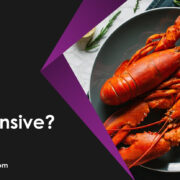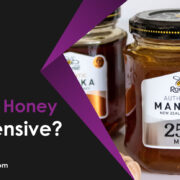Whether you’re self-publishing your first novel or your coffee table book is a collector’s edition, hardcover book printing adds a sense of prestige and quality to any book. There are several options for hardcover binding that differ in price, durability, and visual appeal.
For example, case-laminated books are budget-friendly, durable, and fully customizable. Other binding options include jacketed case laminated and cloth or leatherette covers.
Table of Contents
Choose Your Paper
There needs to be more than a one-size-fits-all solution for paper choice. Your genre, target audience, and budget will all factor into the decision.
Crisp white paper communicates a professional feel and is excellent for images and small text. The dull coating is non-reflective and provides a soft feel to the pages.
When choosing your paper, keep critical content from the edges by 0.625″ so it’s not cut during binding. This includes backgrounds, images, and text that continues to the edge of your pages. This will prevent the pages from being cut off when folded to form the spine.
Design Your Cover
While much of our entertainment has gone digital, books remain popular. Whether you’re publishing fiction or nonfiction, hardcover book printing can make your work stand out on the shelf.
Consider your target audience and their expectations when designing your cover. Cloth or leather covers may align with literary genres, while case laminate or jacketed case laminate covers are sumptuous for more commercial books.
Typically, spines include the title of your book, author name, and publisher imprint logo (even for self-publishers). Be sure to leave room for this in your design file.
Add a Table of Contents
Unlike paperbacks, hardcover books have a more luxurious feel. And with suitable customization options, your book can stand out.
The pages of a hardcover book are bound into a compact stack, known as the page block. The edge of the page block is then roughed up, which exposes more paper fibers to glue, resulting in a stronger bond.
When printing a hardcover book, the page count should be divisible by 4. The more books you print, the cheaper your per-book cost will be.
Add a Map
Before printing, we check your PDF to ensure all your ‘i’s are crossed and your ‘t’s dotted. We also ensure that your file is set up properly with bleed (an extra 1/8″ around your pages that will be cut off) and page counts are divisible by 8. We can add blank pages to complete printing signatures (a standard industry practice) without impacting your pagination.
Hardcover books are sewn bound with white end sheets attached to the front and back covers for a high-end finish. This binding is more robust, beautiful, and easier to open than glue-only binding.
Add a Table of Weights
If you want your book to feel substantial in the hand, hardcover books are a great option. They look beautiful on shelves and lie flat for easy reading. They also have higher profit potential than paperbacks.
Bookbinding options for hardcover books include case laminated and jacket-less. These binding methods feature a hardcover casing made from 98 pt. Davey board can be covered with a printed cover wrap, cloth, or faux leather material.
To accommodate this binding method, page counts must be in multiples of four. You may add blank pages to meet this requirement, but they will count toward your total page count.
Add a Gloss or Matte Finish
If your book has a lot of color or full-color images, a gloss finish will make the colors pop. Similarly, matte finishes offer a subtle, glare-free appearance that’s more appropriate for nonfiction or literary fiction.
Whether you choose matte for its sophistication or glossy for its visual appeal, your finish will resonate with your audience and align with your project’s intended message. Lamination offers protection against everyday wear and tear regardless of your finish choice.
Add a Spot UV
Make areas on your cover pop with Spot UV, a clear varnish that creates a smooth texture. It’s perfect for highlighting essential book elements, ad campaigns, or board game elements.
To prepare a Spot UV file:
- Copy your colored artwork and add a mask layer.
- Create a different color representing the elements you want to be coated and apply it to this layer.
- Make sure all other layers are a black color (CMYK).
- Save this file and upload it to your order.
- Add a Logo
For authors who want a professional-looking book that adds a sense of prestige to their publishing projects, hardcover is a great option. Whether creating a photobook of wedding photographs or a memoir that will be passed down for generations, a hardcover book adds a class to your project and makes a stunning addition to any bookshelf.
With options like case laminated, jacketed case laminated, sewn binding, and more, hardcover printing can offer a truly customized aesthetic that will impress your audience. Add foil stamping and embossing to your cover for a more sophisticated look.
Add a Back Cover
Hardcover books are a great option for authors who want to offer their readers a unique, physical reading experience. They also provide a sense of prestige and sophistication.
Hardcover books are made with case binding, which arranges and glues pages into a text block, then wraps it in covers typically made of cloth or leather topped with paper. Depending on your total page count, you may also have the option to add end sheets, which are used to secure the book block to the cover.
Add a Dust Jacket
In addition to being visually appealing, a dust jacket can be more cost-effective than a hardcover book with a cloth cover. Specialty features like embossing, foil stamping, and spot UV can further enhance your book’s aesthetic.
A dust jacket can be a great place to include a brief author biography, lists of other books you’ve written, a photograph, and links to your website or social media. It can also include the ISBN, publisher, and publication date.








Comments